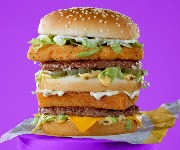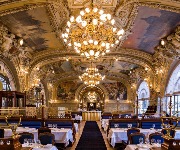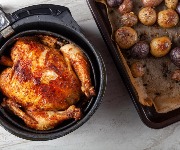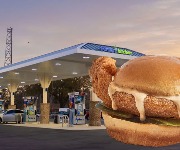There's somebody at the door
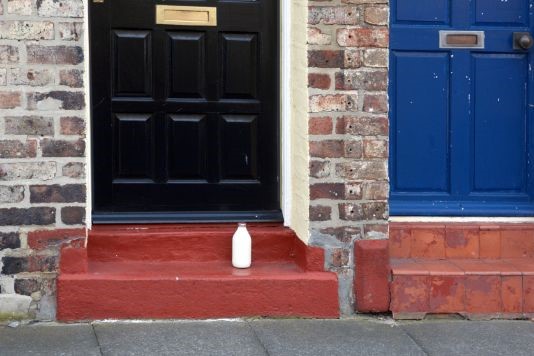
After years of being out of fashion, doorstep food delivery is popular again. Why?
When I was a child, maybe six or seven, McAlpine, the civil engineering and construction firm were doing some building near where we lived. By coincidence, at that time a drinks firm called Alpine - aka ‘the pop man’ - started coming round door-to-door. And with my childlike view of the world, I lumped the two companies together, believing Robert McAlpine’s building firm offered us pop as compensation for the disruption caused by his diggers, trucks and cranes.
It was a deal I found acceptable however, because the pop man and his olive-green flatbed van had all sorts of odd and interesting flavours, like American cream soda, orangeade, and dandelion and burdock, all of which came straight to your door. With his low carbon footprint and encouragement of recycling - 5p on every bottle - he was radically ahead of his time.
Indeed, the pop man was just one of a host of people who used to have ‘a round’. Another was the milkman, with his daily deliveries and eco-friendly electric milk float and again, bottle recycling. Thirty years ago 85% of milk was sold via a doorstep round, today it is just 8%.
There were plenty of other door-to-door callers, salesmen, and delivery boys too. The latter, immortalised by David Jason’s Granville in ‘Open All Hours’, has been with us since the beginning of modern retailing. In the past, many firms delivered, and offered accounts allowing orders to be placed and settled monthly. This was at a time when a grocer would have a shop, an assistant, a few delivery boys and would work his patch. My 1930s copy of Law’s ‘Grocer’s Manual’ contains a section advising the grocer how to write letters of introduction to any housewife newly moved into the area. It reads: ‘Madam, Permit me to offer you and your family on behalf of the traders of the district, a word of cordial welcome on the taking up your residence in the town. Every new-comer is not only a new resident but a new customer, and, as such a help to the prosperity of our community. As a qualified and certificated grocer, I venture of offer my services for the supply of some of your household needs.’ How simply charming is that? And what a wonderful example of customer engagement and service to boot.
The demise of those that once rung the tradesman’s bell and asked for the Lady of the House was precipitated by the motor car, the out of town supermarket, the shrinking of households, and perhaps the simple reason that we stopped being in during the day.
Then came the online food shopping, and we found that we were in, just in the evenings or at weekends, and that we quite liked having someone carry it all into the kitchen. It was frozen food retailer Iceland who were first to launch a home service in 1998, which saw you do your shopping in store and then be in when the van called round later. In 1999 they launched a version on the fledgling information superhighway. Malcolm Walker, chairman and chief executive of Iceland said back then ‘Recent figures show that 18% of households have access to the Internet’. All the more remarkable when you think that Iceland - where much of the food is breadcrumbed, battered or wrapped in pastry and nearly always costs whole pounds to keep adding up simple - is normally seen at the mid to lower end of the market.
Once the suds from the dot.com bubble burst had been cleaned up, other retailers followed suit, and the sector even saw new entries such as Ocado in 2002. After the supermarkets, smaller producers took advantage of improved logistics and technology and started doing internet ordering. Today the whole country is their patch, with most items delivered in 24 hours. Packaging has improved greatly too. For example, when deer farmers John and Nicola Fletcher started sending their venison from Scotland they used to send it via British Rail’s Red Star service, sewn up in hessian and boxed, surrounded by hay with a piece of ginger to keep any flies away. Now it’s all chilled and vac-packed in styrofoam.
So are we back to where we started only with electric vans rather than boys on bicycles whizzing up and down our streets? Do you regularly use online services and have shopping delivered to your door or do you prefer to browse the aisles and shops on the high street? And finally, anyone else remember the pop man?
Also worthy of your attention:
Most Recent
Comments
Be the first to comment
Do you want to comment on this article? You need to be signed in for this feature




